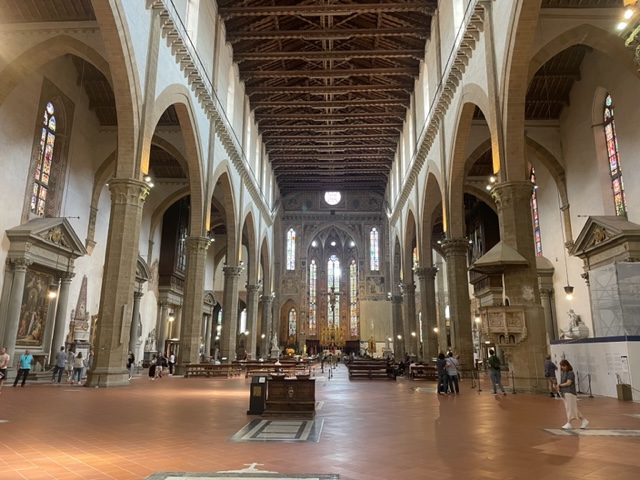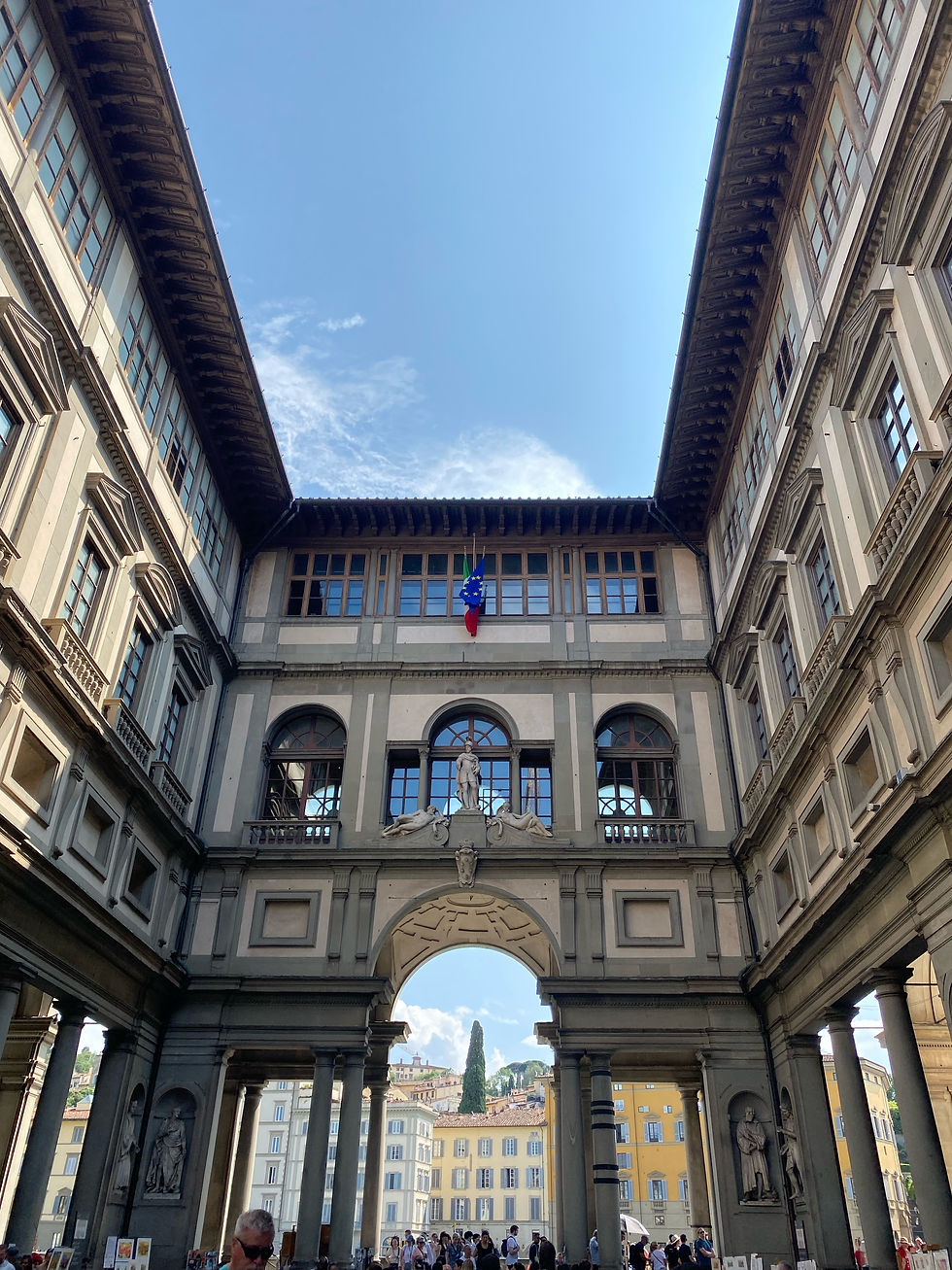Renaissance and Gothic Architecture of Florence Churches
- Mallory Bachmann
- May 29, 2023
- 4 min read
Updated: Jun 8, 2023
By. Mallory Bachmann
Gothic Architecture Characteristics

Gothic architecture emerged during the 12th century in France. During this time many churches such as The Duomo and Santa Croce were built using this style, along with the Giotto’s bell tower and other important monuments to the city. The switch to renaissance architecture began in the 15th century, when these buildings were being finished. Both churches serve as a reminder of renaissance and gothic architecture and the transition between the two.
The physical characteristics of gothic architecture include pointed arches, stained glass windows and vaulted ceilings. Gothic art has mainly religious and devotional meanings behind it. This can be compared to the renaissance style used shortly after which had a more world-centered focus and physically differed with more rounded columns and arches.
The Duomo

The Cathedral of Florence, or “The Duomo”, was built in 1296 by Arnolfo di Cambio but was finished and updated by multiple architects throughout time due to deaths and postponing of the construction. As it was mentioned earlier, The Duomo was built using gothic architecture. However, when di Cambio passed, construction was postponed and later resumed using a more renaissance architecture style.
Inside The Duomo is the church above ground and an additional exhibit and gift shop below ground. One of the most mesmerizing pieces of the church is the Dome, which can be found by walking straight back when entering The Duomo. This Dome, and more specifically the famous ceiling, began construction in 1420 and followed the renaissance architectural style.

The painting of the ceiling did not begin until 1572 and represented The Last Judgment, the second coming of Christ. Its design represents renaissance culture and western humanism. The ceiling features a window looking out to the sky in the center, surrounded by painted figures and stained glass underneath.
While The Duomo is free to enter, visitors also have the option to purchase tickets to climb the dome. This climb is meant for individuals who are confident in their cardio health and are not claustrophobic, considering you’re climbing 463 steps in a narrow space in order to reach the top.
Once visitors reach the top they are rewarded with the stunning view of Florence and a bird’s eye view of The Duomo. Time allowed at the top is limited though, so take it all in, get some pictures and head back down those steps.

Julie Meisner and her kids are visiting Florence for the first time and had The Duomo on the top of their “places to visit” list. Meisner has visited Italy before but this was her kids first time experiencing the architecture.
“We go to a catholic church back home in North Carolina but it is nothing compared to this.”
Meisner was especially impressed by the size of The Duomo.
“It’s crazy because you try to get a picture of it but can’t even see the whole thing at once.”

Santa Croce
The Santa Croce was built around the same time as The Duomo. It is known for being one of the finest examples in Florence of gothic architecture and the largest Franciscan church in the world. Franciscan beliefs and traditions are very similar to those of the catholic faith.
This gallery shows examples of Gothic archetecture throughout the churches. The pointed arches near the columns and around the windows show the style of construction that was used.
The Santa Croce has many more examples of gothic architecture compared to The Duomo. The gallery above emphasizes the pointed arches that can be found on the Church's windows and other structures.
The Santa Croce also has larger windows compared to the ones within The Duomo’s dome (which was built with a renaissance style). This emphasizes the difference between gothic and renaissance building techniques.
The church provides wooden benches that are used in service and for visitors to reflect during their visit. Unlike The Duomo, The Santa Croce is funded by donations and admission costs. Visitors can usually secure a Santa Croce ticket for around 10 euro depending on which website they use.
Private tours of the church and audio books can also be added on to the experience for an additional cost.

Heather Vasquez was visiting Santa Croce for the first time during her Florence stay. She had already seen The Duomo, and while she appreciated both for their history and architecture, Vasquez thought The Santa Croce was more peaceful and allowed more time for reflection.
“My favorite part of The Santa Croce is the outside garden,” she said, “You can find a spot on one of the benches and it’s just so relaxing.”

Unlike The Duomo, The Santa Croce also has wooden benches that guests can sit on during their visit. They can use the time there to listen to the audio tour, read about the history of the church or just self reflect.

Looking into the Future
As time goes on, the architecture of these churches are maintained through cleaning and restoration projects to ensure that these monuments can be enjoyed for generations to come.
For example, in September of 2021 an assembly team came together to work on and restore the Porta dei Cornacchini. This doorway and surrounding sculptures were decaying due to dirt and other harmful debris. The construction only continued for two weeks but was important for the future of The Duomo.
Florence also maintains its historic look through strict zoning and land uses laws. So while Florence may be expanding from its historic center into more modernized architecture, the city’s goal is to keep the historic center untouched.
Next time you are out exploring Florence, or any city, pay attention to the architecture. What time period were the buildings made? What was going on in history and politics during that time? And make time to experience The Duomo and Santa Croce when in town!















Comments